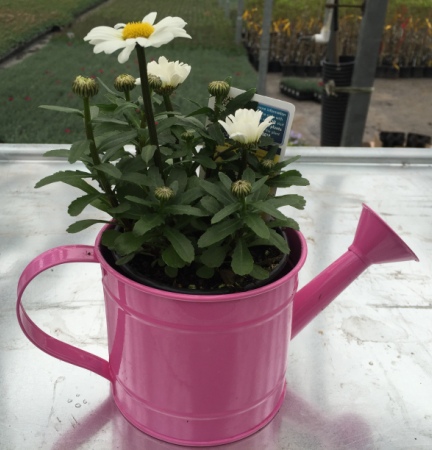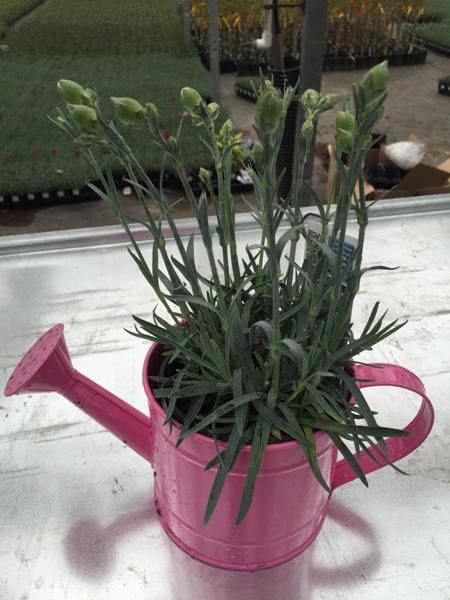USDA Study Concludes Neonics NOT Driving Bee Deaths

Did you catch this headline this week? The Department of Agriculture announced late last week that honey production, which has been disrupted after CCD (Colony Collapse Disorder) devastated the bee population nine years ago, is up 14% and the number of hives is up 4%, increasing the two previous years before that. The total number of beehives today is higher than it was in 1995, when neonics first came on the market.

This article acknowledges that "many past researches often based their experiments on extremely high amounts of pesticides—far more than a bee would normally encounter in its life."
Another topic covered is the real-world impact of banning neonics; the ban of neonics in Europe has actually led to increased bee deaths.
The effects of neonics on bees has definitely been a controversial topic as of late and surely this topic will linger on for some time. These statements from the USDA are the first step in helping our industry move through this challenge. Click here to read the full article.
Study Clears Bayer

In another article by Bloomberg Business, it was announced that researchers at the University of Maryland concluded their three-year study on the effects of imidacloprid on bee colonies and found "imidicloprid, when applied at 'realistic' levels, doesn't harm honey bee colonies." The scientists state that "it contributes, but there is a bigger picture." This study clears Bayer's insecticide as the "sole cause of CCD" and is another small victory. You can read the full article here.
Pollinator Video
While I'm on the subject of bees and neonics, the Horticultural Research Institute, AmericanHort, Society of American Florists and the American Floral Endowment just released an educational video that provides information on our industry's role in bee and pollinator stewardship. This eight-minute video titled, "Protecting Bees & Pollinators: What Horticulture Needs to Know" covers the factors effecting bee and pollinator health, and emphasizes the role horticulture plays in providing healthy pollinator ecosystems.
Click here to learn more about our industry's Bee & Pollinator Stewardship Initiative.
Using BCAs to Control Aphids and Whiteflies
With all of the buzz surrounding neonics, all too often the discussions regarding the alternatives revolve around the use of other chemical insecticides. What options are available to those who want to use "softer" chemistries and/or biological control agents (BCAs)? There are indeed plenty of options available. Here are some of the most effective and commonly used BCAs for controlling aphids and whiteflies:
Aphids
Aphelinus abdominalis - Parasitic Wasp
Aphidius colemani - Parasitic Wasp
Aphidius erviss - Parasitic Wasp
Aphidoletes aphidimyza - Predatory Midge
Chrysopa (Green Lacewing) - Predator
Whiteflies
Amblyseius swiskii - Predatory Mite
Encarsia formosa - Parasitic Wasp
Eretmocerus eremicus - Parasitic Wasp
Metarhizium anisopliae - Bioinsecticide (Met 52)
Captiva (Capsicum extract, Garlic Oil, Soybean Oil) - Repellent/Insecticide
Both Aphids and Whiteflies
Isaria fumosorosea (Paecilomyces fumosoroseus) - Mycoinsecticide (No Fly/Preferal)
Beauveria bassiana - Mycoinsecticide (BotaniGard/Mycotrol)
Chromobacterium substugae (Achromocil) - Bioinsecticide (Grandevo)
Azadirachtin - Insect Growth Regulator (Aza-Direct, Azatin, Ornazin)
Potassium salts of fatty acids - Insecticidal Soap (M-Pede)
The best results are obtained when BCAs are used preventatively or when the pest populations are low. BCAs also don't have the residual activity (longevity) that many of the traditional insecticides provide; therefore, BCAs will have to be applied or released frequently in order to sustain adequate levels of control over time.
Decorative Watering Cans
I couldn't send out a newsletter without at least one perennial picture or idea. How about this use of miniature watering cans?


I obviously won't be winning any awards for the background I selected for these images, but you must admit, these are cute, right?
Cultivate'15

A couple of weeks ago, registration opened for Cultivate'15 (formerly OFA Short Course). Have no fear if you were like me and missed the opening of registration for this event—the event isn't sold out and AmericanHort will still process your registration. And now for the bad news—the hotels near the conventional center do appear to be sold out. Hotels for this event do sell out every year, as it's a literal free for all, often selling out like a Paul McCartney concert (within seconds). There are lots of hotels in the area that aren't associated with this event. If you're having difficulty finding a place to stay consider this: I did Priceline a couple of years ago and landed within walking distance of the event. Click here for event information and registration.
What's on tap at this year's event?
Plenty. Whether you seek education, greenhouse and nursery tours, the trade show or long evenings "networking" with peers (as I like to call it), there's plenty to gain from attending Cultivate'15.
Be sure to attend the lone perennial session titled "Perennials & Grasses for Green Infrastructure" presented by Claudia West (North Creek Nurseries) and Shannon Currey (Hoffman Nursery).
Although there's only one session devoted to perennials, there are more than 100 speakers covering numerous topics, such as LED lighting, growth regulators, biocontrol strategies, landscape and retail tips and much, much more.
Want to see more perennial topics at future events? Be sure to pass your topic and presenter suggestions to AmericanHort by contacting Steve Carver at stevec@americanhort.org.


I hope that spring is arriving at your location. Remember to work hard, be safe and don't forget to find time for yourself and your family. Let me know how spring is going on occasion and if you have or have seen any great ideas, have any new products or if you any future article ideas cross your mind.
Take care,

Paul Pilon
Editor-at-Large
Perennial Pulse
This email was received by over 42,500 readers!
If you're interested in advertising in Perennial Pulse, contact Kim Brown ASAP and she'll hook you up.